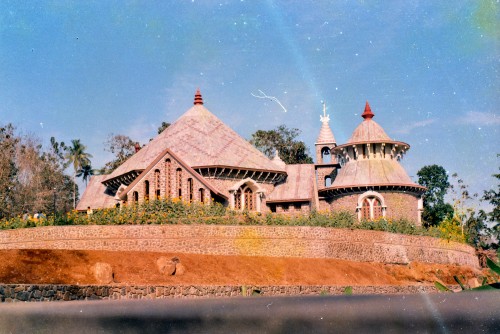Abbey Church

It took nearly ten years to complete the Abbey Church and it was consecrated on December 31 by the then Head of the Syro-Malabar Church, His Beatitude Varkey Cardinal Vithayathil. The Church combines motives of Western, Monastic and Indian temple architecture. The wood carvings are mostly adopted from old buildings in Kerala. The symbolism behind the structure of the church is the Transfiguration of Jesus.
Being the Church of the Transfiguration, it consists of three distinct structures: (i) the main Church where the liturgy is celebrated, (ii) the Blessed Sacrament Chapel, (iii) the sacristy – all the three are linked together by a spacious hall allowing free movement from one to the other. The church is built on the highest spot of our property at the time of its building. Thus the symbolism of Transfiguration makes sense. As we find it in the Gospel of Luke, the monks go up to the mountain, to the house of God on the mountain, to be transfigured through their life of prayer.
The Blessed Sacrament Chapel is particularly meaningful. It is in the form of the Holy of Holies in any ancient Hindu Temple. The Blessed Sacrament is kept, not in the traditional tabernacle, but in a “treasure box”, in which rich families in ancient Kerala used to keep their valuables. The meaning is that the Eucharistic Lord is the real treasure of the monk and he should live in the monastery with his heart set on that Treasure.
